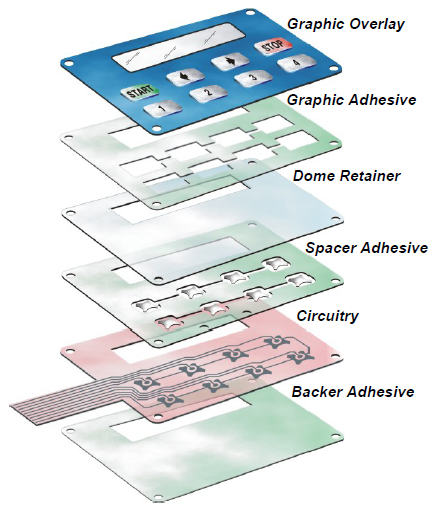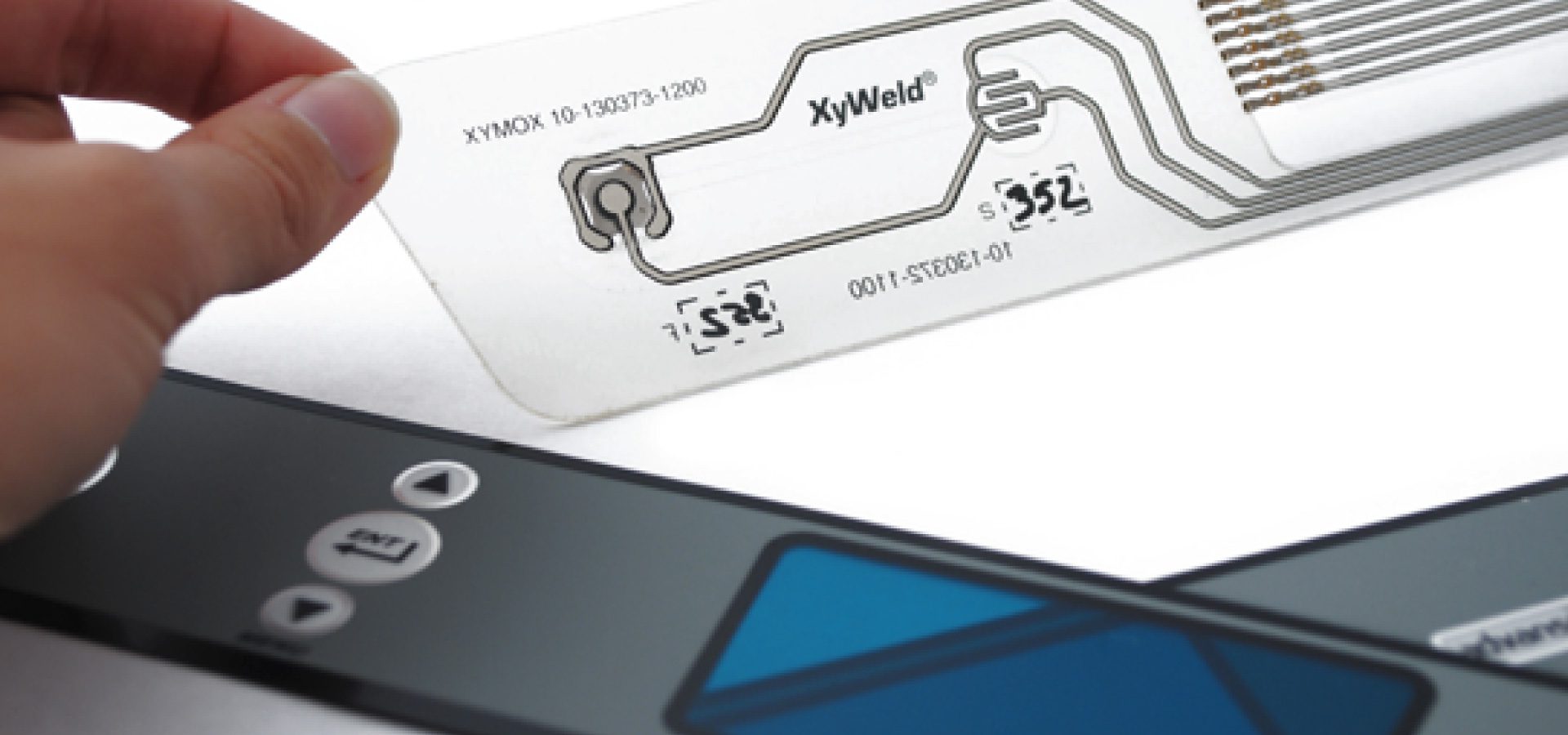Exactly How Membrane Switches Enhance Functionality in Industrial and Customer Applications
The Ultimate Source on Membrane Changes: Layout, Functionality, and Applications
Membrane switches over offer as a fascinating junction of style and functionality, playing a pivotal function in modern-day customer interfaces across various industries. As we explore the varied applications of membrane buttons, it comes to be obvious that their flexibility and durability are crucial in environments varying from medical care to customer electronics.

Understanding Membrane Buttons
Membrane buttons are a kind of individual interface technology extensively used in numerous electronic tools, defined by their slim, versatile layout and capability. These switches include multiple layers that include graphic overlays, sticky layers, and wiring, making it possible for a portable and efficient user interface for customers. They can be located in home appliances, clinical devices, and industrial control board, providing a reliable technique for customer interaction.
Among the key benefits of membrane buttons is their capacity to withstand impurities such as dust and wetness, making them appropriate for settings where sturdiness is crucial. Their inconspicuous design enables seamless assimilation into different applications, while the personalized visuals overlays enhance individual experience by giving clear aesthetic feedback. Additionally, membrane layer switches can fit a selection of modern technologies, such as tactile comments and backlighting, additional boosting their use.
The manufacturing process for membrane layer switches over commonly involves screen lamination, die-cutting, and printing strategies, making certain accuracy and uniformity in manufacturing. Generally, membrane switches over stand for a functional and reliable remedy for modern electronic devices, incorporating performance with visual charm in user interface layout.
Secret Parts and Design Components
A range of essential elements and design components integrated to develop a reliable membrane layer switch. At the core, the visuals overlay serves both visual and useful functions, providing an easy to use interface while shielding interior components from ecological aspects. The choice of products, usually polyester or polycarbonate, influences longevity and tactile responses.
Under the overlay, the glue layer ensures the switch adheres safely to the substratum, which can be steel, glass, or plastic. The spacer layer is vital, as it maintains the essential space in between the overlay and the circuit layers, enabling reliable actuation. Membrane Switches. Circuit traces, typically made from conductive ink or adhesive, are printed on a versatile substratum, allowing electric signals to be sent when stress is used
Design considerations additionally consist of the plan of responsive domes or embossing that provide physical comments to the customer, enhancing the general experience. Additionally, the design and spacing of the buttons should be optimized for ease of use, making certain that customers can navigate the user interface with ease. Overall, these components and style components work synergistically to create a trustworthy, practical membrane layer switch customized to particular applications.
Capability and Operation System
At the heart of effective performance for membrane switches lies their operational system, which facilitates user interaction through a simple yet effective style. These buttons operate the principle of stress activation, where a customer uses pressure to an assigned area of the button (Membrane Switches). This activity presses the layers of the switch, completing an electric circuit that sends a signal to the connected tool
The building and construction commonly includes a top visuals layer, a glue spacer layer, and a bottom circuit layer, which collectively form a robust interface. When pressure is applied, the leading layer falls down versus the lower circuit layer, permitting conductive traces to attach. This style not only enables clear tactile feedback but additionally makes certain resilience and reliability, as the switches are usually immune to dirt and moisture.
Moreover, the adaptability of membrane layer switches permits integration with numerous innovations, including LED indications and microcontrollers, improving their performance. By offering a streamlined user interface that minimizes mechanical wear, check out this site membrane layer changes remain a popular choice in applications varying from consumer electronics to commercial equipment, making sure optimal efficiency and individual complete satisfaction throughout diverse settings.
Kinds Of Membrane Layer Switches

One more considerable group is brightened membrane switches, which integrate backlighting to boost presence in low-light problems. These switches are commonly made use of in control panels and control panels where clear presence is important.
In addition, there are personalized membrane layer switches over made to fulfill particular dimensional, graphical, and functional needs. These customizations can consist of one-of-a-kind forms, shades, and formats, permitting for seamless integration right into different tools.

Applications Across Numerous Industries
How do membrane layer buttons improve performance across diverse sectors? These flexible components are integral to countless applications, providing streamlined interface and robust performance. In the clinical industry, membrane buttons play a critical function in devices such as analysis devices and client tracking systems, where reliability and convenience of cleaning are extremely important. Their capacity to hold up against extreme environments makes them excellent for lab instruments and surgical gadgets.
In the automotive market, membrane layer switches are commonly made use of in dashboards and control board, providing user-friendly controls that enhance chauffeur safety and security and benefit. The customer electronic devices industry also gains from their customizable and light-weight features, allowing streamlined designs for smartphones and home devices.
Furthermore, membrane layer buttons locate applications in industrial automation, where they add to efficient equipment procedure and surveillance systems. Their resistance to dirt and wetness ensures functionality popular conditions (Membrane Switches). Furthermore, the food and beverage sector uses membrane switches for equipment control, where hygiene and longevity are critical
Final Thought
In verdict, membrane layer switches over stand for a crucial advancement in interface modern technology, identified by their one-of-a-kind style and capability. Their key components, consisting go to these guys of visuals overlays and circuit traces, add to their functional efficiency with stress activation. The flexibility of membrane layer switches over facilitates their application across diverse sectors, from clinical gadgets to consumer electronics. This thorough understanding reinforces the relevance of membrane switches in improving product usability and sturdiness in modern-day technological settings.
Membrane layer switches over serve as an interesting crossway of design and capability, playing a pivotal function in contemporary customer interfaces across various markets.Membrane layer switches are a kind of individual interface innovation commonly used in different digital tools, defined by their thin, versatile design and performance.At the heart of effective performance for membrane layer switches exists their functional device, which assists in individual communication with an easy yet efficient style. These buttons operate on the principle of stress activation, where a user uses pressure to a designated location of the button.In final thought, membrane switches stand for an essential development in customer interface innovation, identified by their distinct design and functionality.